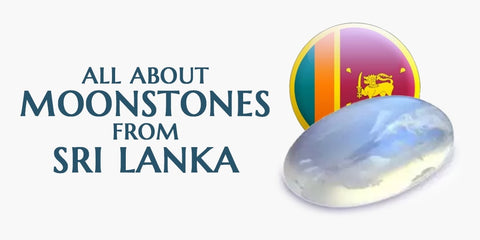
Moonstone History
A small gemstone, an incredible appearance, a unique optical effect, moving reflections that evoke the moon, and the moonstone rises to the rank of sacred stone, divination stone, and even talisman because in most cases, the first encounter with the moonstone was an encounter of revelation. Let's go back to the beginning of the moonstone's history to better understand where this rare stone came from and what made it so famous that it still enjoys today.
The origins of moonstone
The origins of moonstone go back hundreds of years. According to the beliefs of the Greek and Roman civilizations, moonstone comes from the solidification of moonbeams, because people had no other way to explain this striking resemblance between it and the moon.
Moonstone displays, in fact, on its surface, an optical phenomenon known as adularescence, which shows beautiful bright blue and silver reflections every time a ray of light penetrates the layers of its internal structure. Depending on the variety, these reflections can appear as stars or as cat's eyes. It was therefore similar in every way to the nocturnal star, and more precisely when it is in the full moon phase.
Given this fact, our ancestors who worshipped deities generally associated with the stars, having seen in the moonstone an identical appearance to the lunar deity, decided to raise this stone to the rank of sacred stone.
Thus, among the Hindus, the moonstone is designated by an expression composed of the Sanskrit terms "chandra" and "kanta", which mean "moon" and "beloved". In several other cultures, it has been given similar names indicating its astral origins.
The moonstone in Roman civilizations
Among the Romans, the cult devoted to the moonstone is incredible. These people believed that the stone changed its appearance according to the phases of the moon and that it even had the ability to influence the phases of the moon. They were also convinced that they could perceive the image of the Roman moon goddess, Diana, on each moonstone. The love and attachment to this stone was therefore very much anchored in the tradition and in the endogenous religions of these peoples.
Moreover, given the spiritual significance associated with its shape and appearance, it was also used for divination. It was associated with the moon, which was itself associated with feminine energy. Thus, in ancient times, diviners put moonstones in their mouths and were able, according to the story, to see into the invisible world and predict the future.
The moonstone in our time

Moonstones are very appreciated nowadays for their benefits.
Can we say that the cult devoted to the moonstone belongs to the past? Certainly not. Indeed, even if it is no longer venerated as it had been in Antiquity, in our time, its fame has not really decreased.
We remember well the year 1969, when more than thirty years after the first moon landing, the American state of Florida declared the moonstone the official state stone.
Today, the elegance and spiritual properties of moonstone, which comes in a wide variety of colors, from white to green, red, orange and blue, have given it a place of choice in the jewelry and crystal healing sectors where it is used to treat certain emotional, psychological and spiritual problems.





